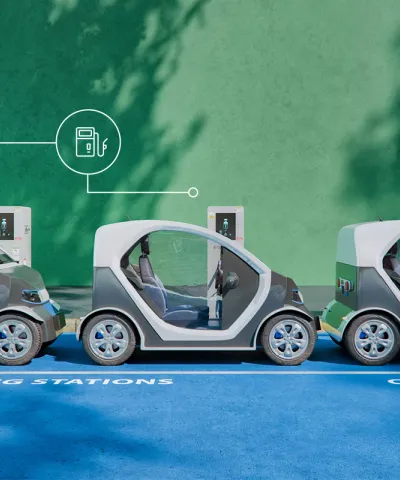We previously introduced Simon-Kucher’s Sales Benchmarking Analysis for Digital Solutions, which studied the sales approach for 16 digital products and services. In our final article of this 4-part series, Grigori Bokeria and Daniel Bornemann deep dive into the case of a company that has anchored digital products and services into its conventional sales approach. Read here about how heavy equipment manufacturer Caterpillar sells its digital solutions!
Caterpillar is an established global heavy equipment manufacturer based in the US, targeting B2B customers from construction, marine, and resource industries. Its digital solutions focus on equipment management and maintenance, solving a major customer challenge in process efficiency and transparency. Caterpillar’s digital fleet operation services are particularly attractive for customers, as maintenance is mostly manual and reactive. Caterpillar is able to optimize these processes and connect assets through its pro-active services, IoT-based remote diagnostics, and equipment monitoring.
At the core of this strategy is the Caterpillar digital model, and in particular the recently launched Cat App. It sends users customizable push notifications on their machines’ location, fuel, and operating hours. Equipment fault codes provide warnings of critical service issues that need to be addressed before downtime occurs. Maintenance can be managed remotely through planned service indicators based on a machine’s operating hours. All of this information is sent to the user, who has the option to order new parts and request services.
Caterpillar’s digital ecosystem is a powerful tool for cross-selling and brand loyalty, targeting existing customers through an enhanced value proposition. While its current sales approach focuses on the first 2-3k machine coverage hours after the point of sale, these digitally enhanced services can be used to extend the customer relationship. What to sell, how to sell, and for which prices can only be answered through detailed value segmentation, specifically developed to determine the willingness to pay for support.
Heterogeneous distribution structure as proper ground for varying commercial approaches
Caterpillar’s organizational setup is fully decentralized for primary products, aftersales, and digital solutions. Products and services are sold almost exclusively through a network of independent dealers (168 dealers serving 182 countries). This very heterogeneous distribution structure can lead to inconsistencies in the offering and international brand perception. Digital offerings are sold through legacy sales reps, both at the POS for primary products and throughout the lifecycle. Price models and offering design likely differ from one region to the next, and potential initiatives geared toward more standardization typically face headwind due to the inherent complexity of implementation.
Caterpillar provides digital expertise, dealers handle the customer-facing side
The number of sales reps varies by dealer and business unit. In the great majority of cases, sales reps have profound technical knowledge to navigate customers through the multiple solutions the company is offering. Although the route-to-market for digital offerings still goes through the legacy distribution structure, Caterpillar centralizes its digital capabilities, developing them organically with limited outsourcing to IT companies. It relies on its own many years of engineering experience in designing engines and predicting failure, and extends its expertise to support dealers in the last mile of ecommerce by developing dealer business capabilities. Plus, thanks to connectivity and remote troubleshooting, the number of technician trips to fix equipment is cut in half. This alleviates the pain point that dealers experience in finding, attracting, and hiring qualified technicians. However, it is up to dealers to organize the sale of digital products. Caterpillar has little impact on the customer-facing activities downstream in the market.
Manageable sales costs for Caterpillar
Caterpillar has historically outsourced direct sales costs to its distribution partners. Digitally enhanced services are introduced within the existing sales structure, so they can be considered as a relatively low-cost route-to-market. In fact, the sales setup is left up to the importers, their ability to shake up their own organization, and the importance they dedicate to these new revenue streams. Sales costs remain low as long as sales execution remains outside of the organization. However, efficiency could potentially be undermined by the lack of consistent digital capabilities. Any short-term changes are challenging to implement.
What can be learned from this case?
Caterpillar didn’t invest in a separate digital organization or push a separate digital unit downstream in the market. Its digital solutions for equipment management are an extension of offline services that have been in place for years. Existing sales reps are highly skilled and cannot be easily replaced so long as the digital offering requires more hardware than digital knowledge. In addition, digital offerings are mainly embedded in service agreements that combine physical and digital services.
This approach can be considered a sustainable solution for companies that are offering digital products and services closely related to their existing offerings and customer segments. The synergies from the sales team’s strong networks and current sales channel setup keep costs low. However, sales professionals should be closely supported to ensure they are equipped with the digital expertise to sell the solution.
Read more from our Sales Excellence for Digital Solutions series:








